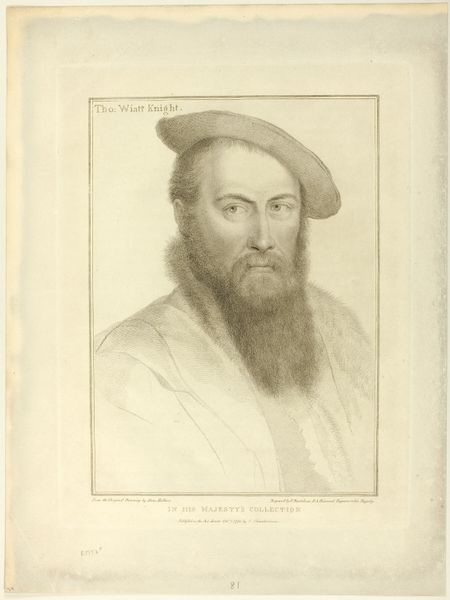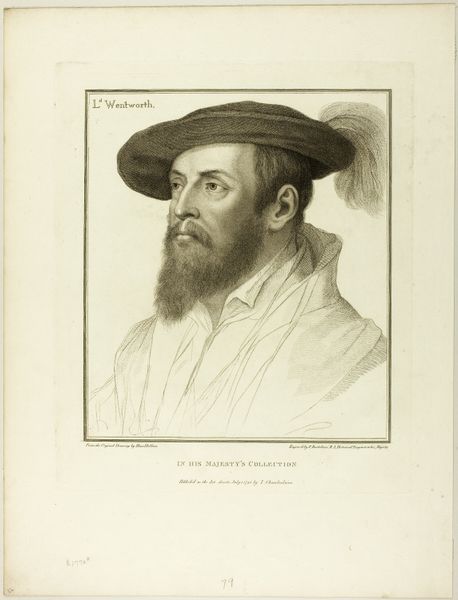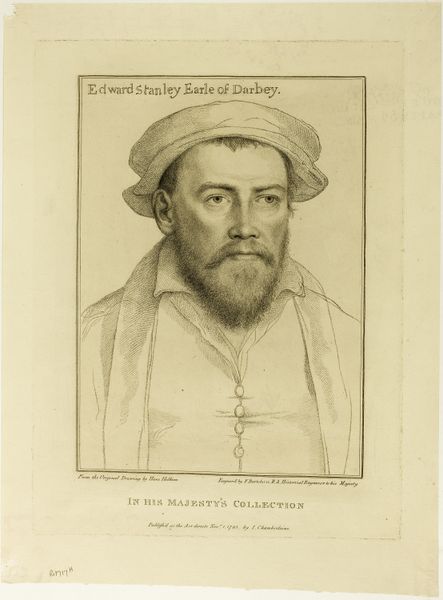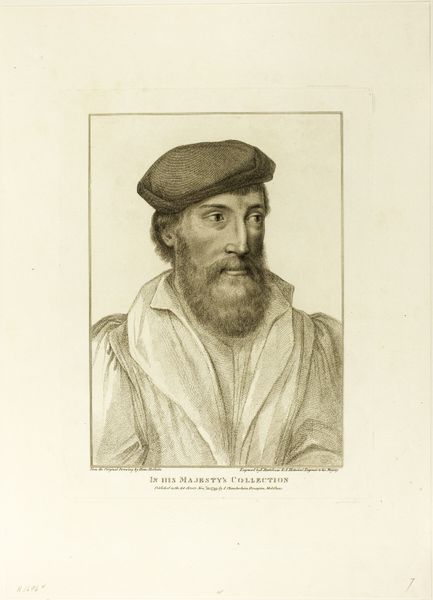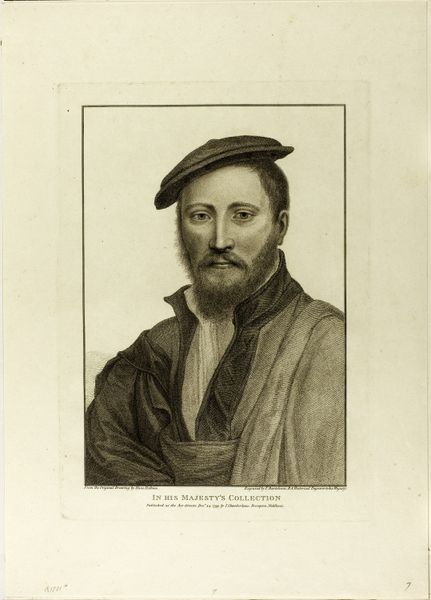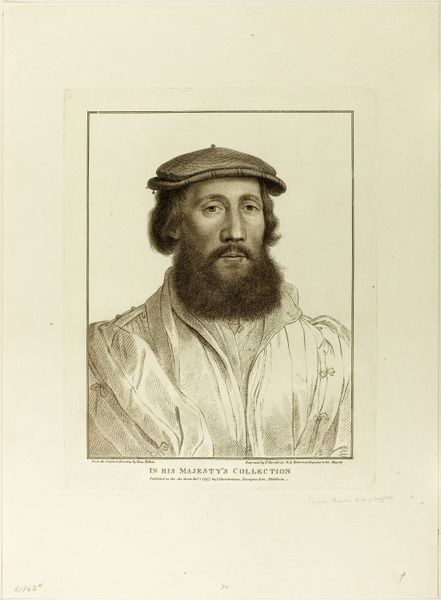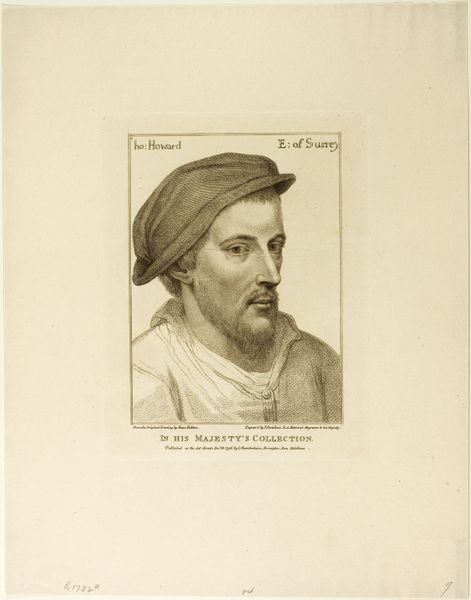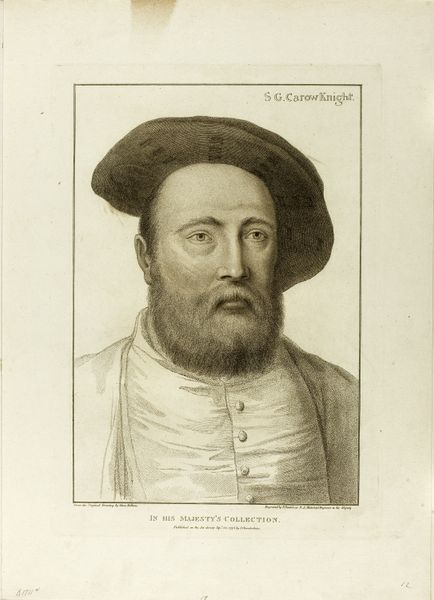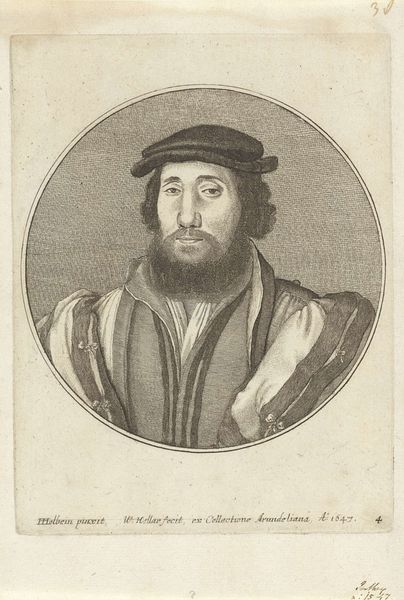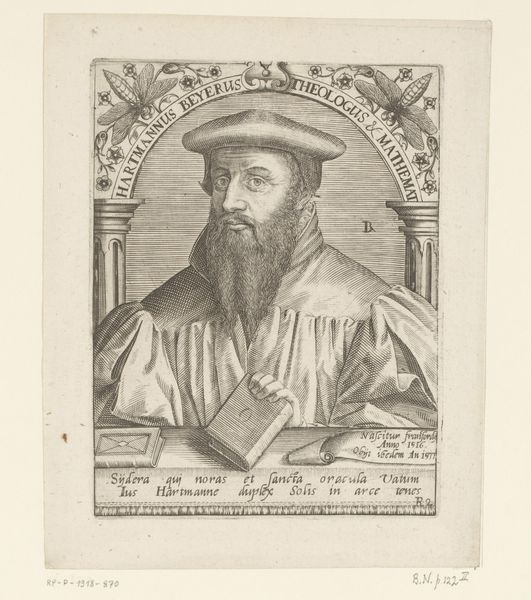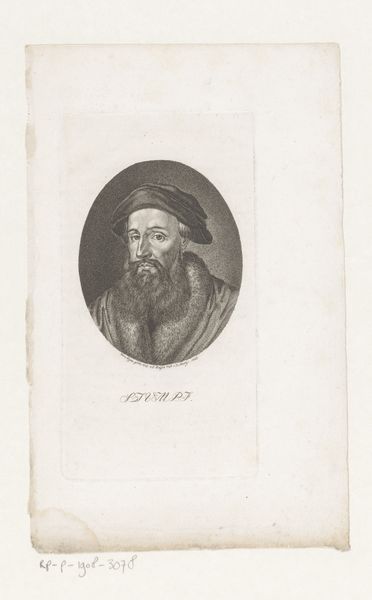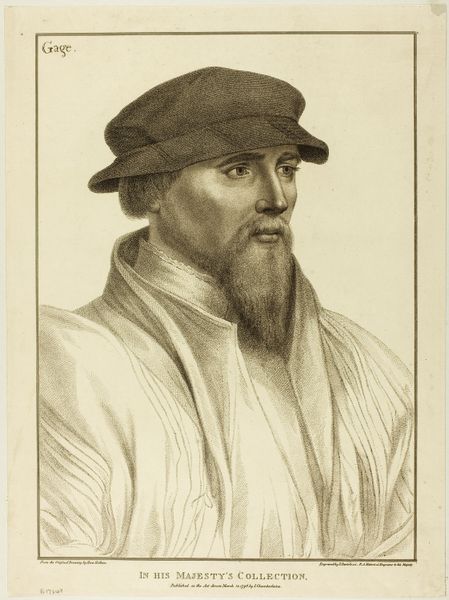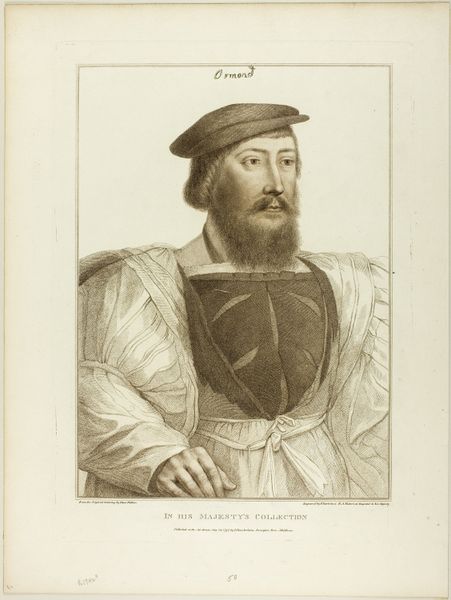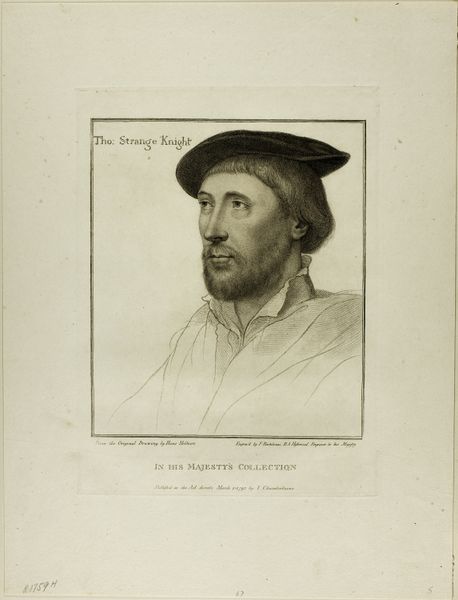
drawing, print, paper, engraving
#
portrait
#
drawing
#
neoclacissism
# print
#
paper
#
history-painting
#
engraving
Dimensions: 296 × 195 mm (image); 354 × 232 mm (plate); 389 × 357 mm (sheet)
Copyright: Public Domain
Editor: So, this is Francesco Bartolozzi's "Sir William Sherington," made in 1795. It’s an engraving, so lines and shading build up the image. He's so serious-looking. How do you interpret the work? Curator: Looking at it through a historical lens, I see this portrait operating within the conventions of its time but also subtly commenting on the political landscape. Engravings like these played a crucial role in disseminating images of power and status in the late 18th century. Did the inscription at the bottom— "In His Majesty's Collection" -- catch your eye? Editor: It did! What does it tell us? Curator: It positions Sherington as an object worthy of royal interest, elevating his status through association with the Crown. Think about the political implications: Was this commissioned? How does that affect the artwork's reception? This neoclassical era sought to represent power in very specific ways. Do you see those reflected here? Editor: Well, yes, there's a certain reservedness, a formality… I hadn't considered it in terms of power, but I do see it now. The way he is presented feels deliberate and carefully constructed. I see now that art from this era becomes a commentary of the British Monarchy! Curator: Exactly! This work helps us to reflect upon how representation intersects with societal structure. Every element can tell us something about the context. Editor: That's a great point, looking at how societal structures impact artistic portrayals, and vice-versa, adds an entirely new layer. Thank you!
Comments
No comments
Be the first to comment and join the conversation on the ultimate creative platform.
